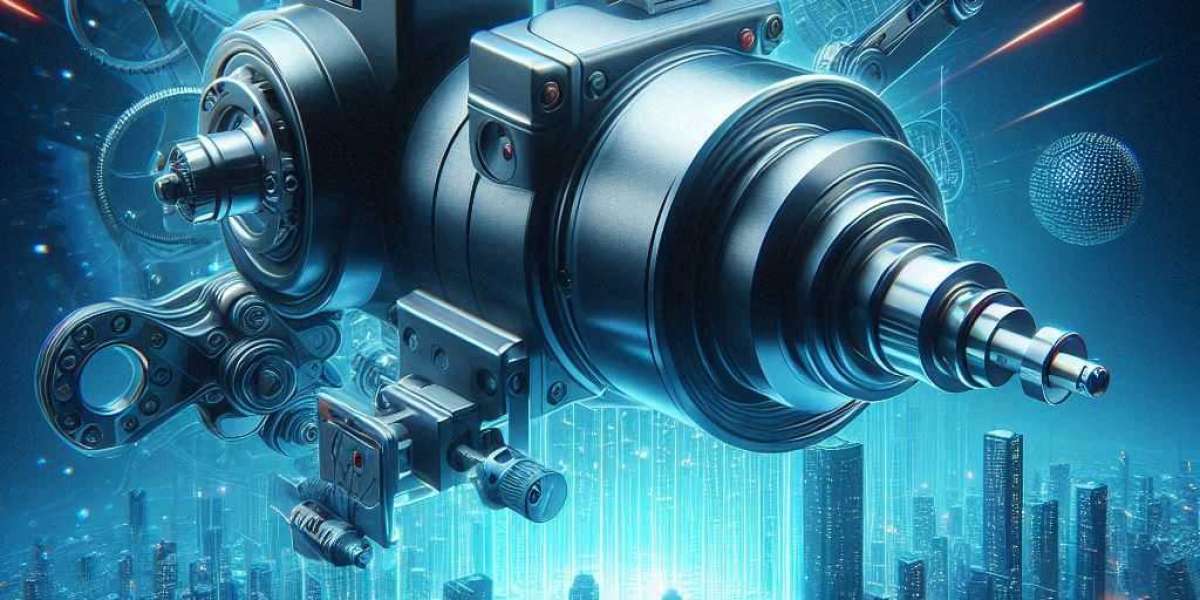Valve Actuators are crucial devices used to control the operation of valves in various systems, ranging from industrial processes to everyday household appliances. These devices convert energy, typically electrical, pneumatic, or hydraulic, into mechanical motion that moves the valve’s internal components, such as a disk or plug, to regulate fluid or gas flow. By ensuring accurate valve positioning, valve actuators play a significant role in maintaining the efficiency and safety of many systems.
What Are Valve Actuators?
A valve actuator is a mechanical device responsible for opening or closing a valve. It uses energy from various sources to automate the valve's movement, which can be important in applications where manual valve operation is impractical or unsafe. The actuator generates the force needed to move the valve's mechanism, thus controlling the flow of liquids or gases within a pipeline or system.
In industrial applications, valve actuators are critical for regulating processes such as chemical reactions, water treatment, oil and gas distribution, and HVAC systems. In each of these environments, proper flow control is essential for system optimization, safety, and performance.
Types of Valve Actuators
Valve actuators come in a variety of types, depending on the energy source used to operate them. The most common types of valve actuators include:
- Electric Valve Actuators
These actuators are powered by electricity and are among the most widely used in industrial applications. Electric actuators are often preferred due to their precise control over valve positioning and easy integration with digital systems. They are ideal for remote control and automated systems, where manual operation would be difficult. - Pneumatic Valve Actuators
Pneumatic actuators use compressed air to operate the valve. These are popular in environments where electricity might pose a safety hazard, such as in explosive atmospheres. Pneumatic actuators are often faster and more responsive than electric actuators, making them suitable for high-speed applications. - Hydraulic Valve Actuators
Hydraulic actuators use pressurized hydraulic fluid to create movement. These actuators are known for their high force and are typically used in systems where heavy-duty operation is necessary, such as in oil rigs or large-scale manufacturing processes. - Manual Valve Actuators
Although automated actuators are common, manual actuators are still used in some applications. These actuators rely on physical force, such as a handwheel or lever, to operate the valve. They are typically found in smaller systems or where automation is not required.
Importance of Valve Actuators in Modern Systems
The role of valve actuators extends far beyond simple flow control. In industrial settings, they ensure that systems operate smoothly and safely by regulating pressure, temperature, and fluid flow. The automated function of actuators eliminates human error, minimizes downtime, and reduces operational risks, leading to more efficient production cycles.
In addition to controlling flow, valve actuators also play a vital role in emergency shutdown systems. When systems need to be stopped quickly due to a malfunction or unsafe condition, the actuator provides the rapid valve movement necessary to cut off the flow of dangerous substances. This is particularly critical in industries dealing with hazardous materials, such as chemicals and petroleum.
Factors to Consider When Choosing a Valve Actuator
When selecting a valve actuator for a specific application, several factors must be considered to ensure optimal performance. These include:
- Valve Type
Different types of valves require different actuators. Ball valves, gate valves, and butterfly valves, for example, all have different mechanisms and force requirements. Ensuring compatibility between the actuator and the valve is essential for efficient operation. - Power Source
The power source—whether electric, pneumatic, or hydraulic—will influence actuator selection. Factors like energy availability, environmental considerations, and the specific operational needs of the system will guide this decision. - Response Time
The speed at which the actuator moves the valve is crucial in many applications. In fast-moving industries, such as pharmaceuticals or food processing, quick response times are necessary to maintain control over processes and avoid potential bottlenecks. - Environmental Conditions
The environment in which the actuator will operate affects its performance. In extreme conditions, such as high temperatures or corrosive atmospheres, selecting a durable and reliable actuator is vital for longevity and safety.
The Future of Valve Actuators
The future of valve actuators looks promising, with advancements in technology leading to more intelligent and efficient devices. Innovations such as AV Actuators with built-in sensors and IoT capabilities are becoming increasingly common. These actuators allow for real-time monitoring, predictive maintenance, and improved control systems, thus enhancing overall operational efficiency.
In conclusion, valve actuators are indispensable components that significantly impact the performance, safety, and automation of fluid and gas control systems. By understanding their types, functionality, and applications, industries can select the right actuator to ensure optimal system performance and reliability.







